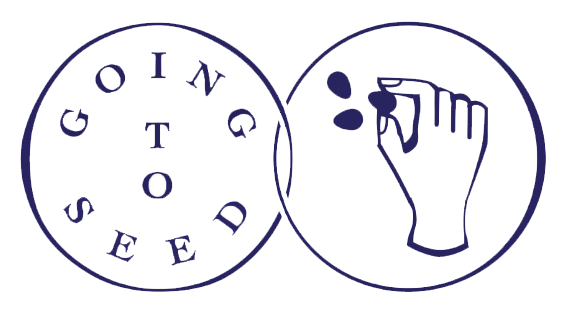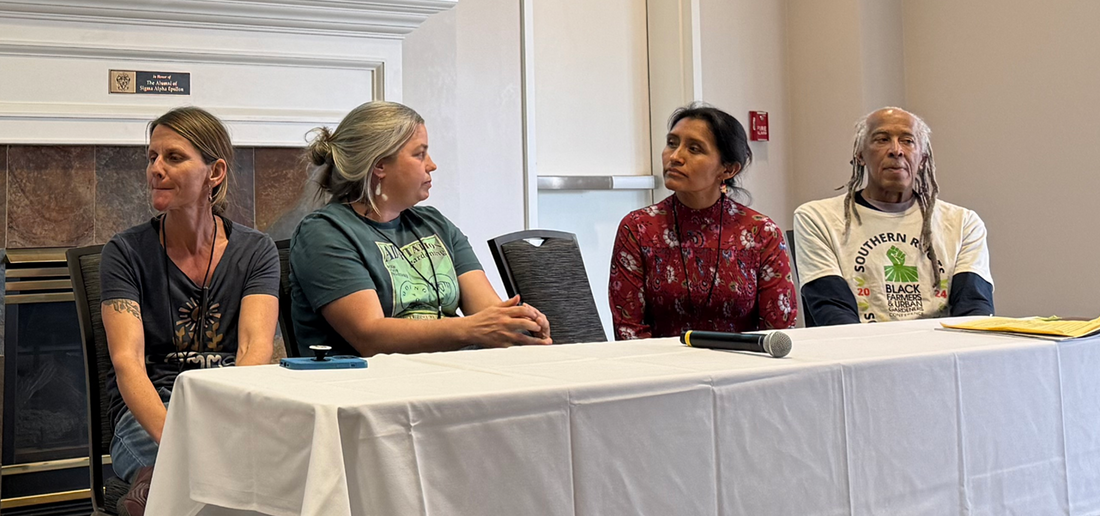 Jim Embry
Jim Embry
Our family came to Virginia in an enslaved condition largely out of Nigeria around 1780 or so and were later forced to move across the Appalachian Mountains into Kentucky, where we’ve been since 1800. I live in this rural Black agrarian community that’s been here for over 200 years. My ancestors brought a deep reverence for the land. They danced and prayed for food, celebrated harvests, and honored the cycles of the moon and earth. Seed saving wasn’t separate from other tasks like quilt-making or barn-raising. Food, seeds, and rituals were inseparable.
Our connection to seeds goes back billions of years—back to the formation of the earth. I like to think of seeds cosmologically. We’re stardust, condensed into human form, and seeds are a physical representation of that. This perspective informs how I approach farming, food, and life.
Resilience is about survival—not just as individuals, but as a species. Communities must adapt to overlapping crises, like climate change and pandemics. We need smaller-scale, bio-regionally focused communities where people produce food locally and share resources. Everyone should be growing something.
I see myself as a pollinator. On our farm, we’ve created pollinator habitats with native plants, but I also pollinate ideas. My vision is grounded in an earth-centric and woman-centric foundation. Indigenous knowledge is crucial here. For example, in Turtle Island, people call corn, beans, and squash the “three sisters,” emphasizing their familial connection. We need to build on these traditions while addressing systemic issues like corporate seed monopolies. The agribusinesses have 25-year plans to dominate global agriculture. We need a 25-year vision for our seed movement. Universities educate future leaders in every field—agriculture, government, business. If we can influence their priorities, we can drive systemic change.
 Nancy Kost
Nancy Kost
I’m from Bolivia. I didn’t realize we were poor until I read reports in grad school stating Bolivians lived on less than $1 a day. Growing up, we had the freshest food and a connection to seed saving. In my community, planting was a shared process. For example, with potatoes, we’d save the seeds, plant in September, harvest around March or June, and process them during the cold months to make chuño—dehydrated potatoes that stored well. We had diverse varieties, and everything felt connected. I loved it.
When the price of quinoa shot up, people planted every bit of available land. It created conflict. Community lands were overused, families fought over plots, and soil was overtilled. Hybrid quinoa, synthetic fertilizers, and mechanized farming were introduced, and traditional methods like resting the soil for years were abandoned. By 2011, people had stopped planting quinoa for themselves and switched to buying pasta and rice instead.
Realizing how consolidated the seed industry was becoming, I started saving seeds around 2010. We searched the USDA seedbank for crops from climates similar to ours, and trialed about 550 varieties of crops. In 2018, we launched the Buffalo Seed Company, selling exclusively seed produced in Kansas and Missouri. Through workshops like “Seed Saving: Enhancing Diversity and Resiliency,” I teach the importance of saving seeds to build resilience and adapt to climate change. Everyone’s preferences and growing conditions are unique, so I advocate for saving seeds that reflect those needs.
 Julia Dakin
Julia Dakin
I grew up in a house where everything was always about to fall apart, and I was really worried about the world’s food supply. I saw how dependent agriculture is on fossil fuels, how wasteful it is, and how many people would be in danger if the price of gas went up. From a young age I was drawn to working with soil, plants, and animals. For years, I focused on soil health, as one does in regenerative agriculture. A series of events led me to question almost everything I had learned in agriculture, and the book Landrace Gardening opened my eyes to what I had been missing: genetics and the long relationship with the crops we grow. My western agriculture mindset had me trying to control field conditions so my crops would thrive, but now I saw that inviting genetic diversity and allowing crops to adapt was the path to resilience.
Locally, I am part of the Field of Dreams. We grow and share seeds adapted to our cool summer coastal California climate, host community seed saving parties, and distribute and collect seeds from the community. It’s a testing ground for my work with Going to Seed, and I’m learning how to support other seed libraries in increasing locally grown seeds.
I’ve also worked with Indigenous Women-led non-profit Xa Kako Dile:, growing native food crops and practicing traditional ecological knowledge. This year I’m collaborating with Women With Bows, growing produce locally for instant meals for tribally distributed commodity boxes, replacing ultra-processed food products.
 Melissa DeSa
Melissa DeSa
My interest in agriculture comes from my work for many years as a wildlife ecologist that merged when a friend got me involved in our local Slow Food chapter. The connections between the natural world and our agricultural food systems became apparent to me as I learned more about farming practices, food and the ways it impacts our natural communities. Slow Food was great, but we felt limited as part of such a large national organization. So, we branched off to focus locally, forming Working Food in 2012. We organized farm tours, hosted workshops, and even started a small flower farm. A student who was working on a seed library project helped me realize just how few seeds came from local sources. That sparked a deeper interest in seeds, and eventually, seed saving became a central part of our nonprofit’s work. I come to the seed growing world with an ecological lens, curious about all the interactions in a plant’s life from seed to seed in our unique and challenging climate. As an artist, these are often the delights that find their way into my work.
Working Food has three main programs: youth education, seed collective, and commercial kitchen program. We grow and save seeds on-site, teach growers seed-saving techniques (from kindger-gardeners to commercial farmers!), distribute those seeds back into the community, and sell our locally adapted varieties online that helps support our work. Farmers can be hesitant to try new things. They have to grow what their customers want and prioritize consistency, which makes them lean toward larger seed companies and familiar varieties. To address this, we do the experimentation – trialing new crops, adapting them to our place through seasons of local selection, show that they can succeed here, host taste tests, and invite farmers to see the results.
I’d love to see our seed program grow into a true grower collective, with more people actively growing and experimenting with seeds, and every farmer saving seeds as part of their routine farm planning. On a broader level, I’d like to connect our kitchen program more closely with farmers—helping them value-add their products and fostering stronger ties between local food businesses and local farmers.

